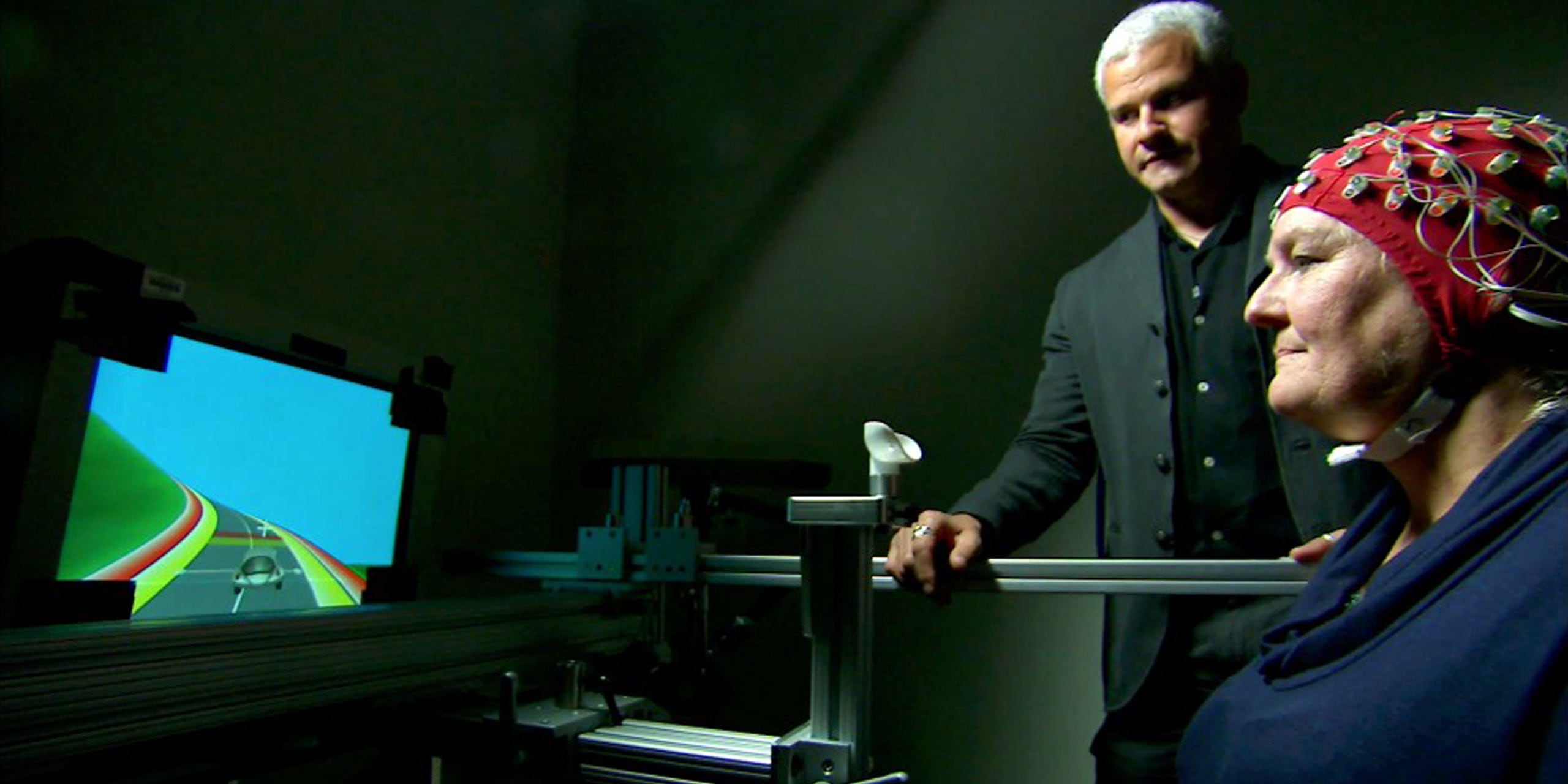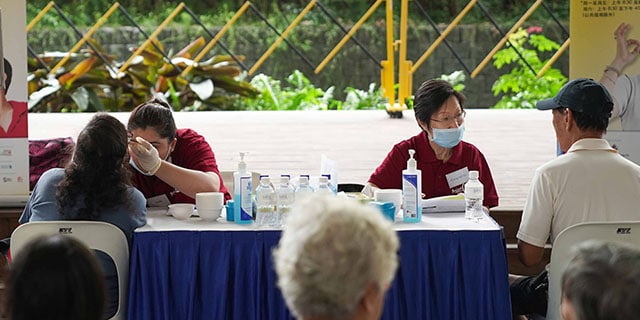6 Medical Breakthroughs Revolutionising Healthcare
6 Medical Breakthroughs Revolutionising Healthcare
Bionic humans and designer cells the stuff of sci-fi movies? Think again. These medical innovations are already changing the face of healthcare.

“Live long and prosper’, as all Star Trek fans will swear by, was Mr Spock’s traditional Vulcan salute in the original Star Trek TV series. Some 40 years on, this inter-galactic greeting is quickly becoming a real-world reality.
By 2050, it’s projected that the world population aged 60 years or over will reach 21 percent, according to the United Nations World Population Prospects 2012 Revision. That’s up from just 12 percent in 2013 and a low 8 percent in 1950.
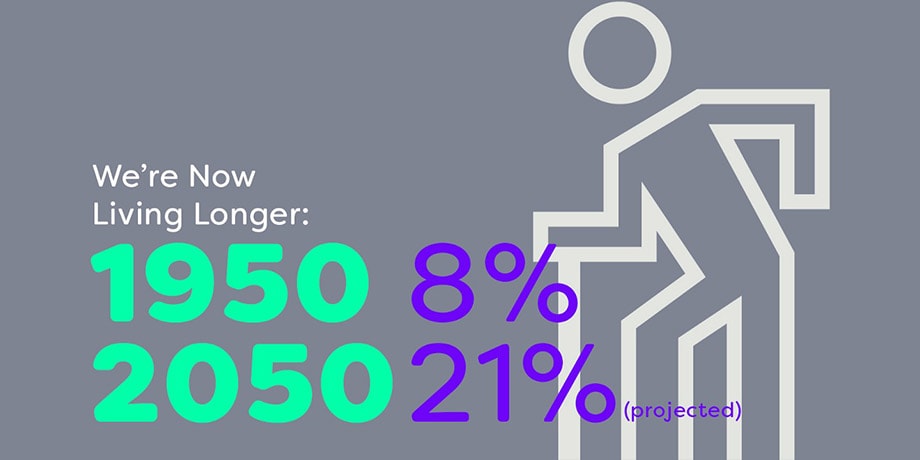
Projected percentage of the world population aged 60 years or over
Living longer is a clear reality particularly in developed nations, aided in no small part as the healthcare industry enters the digital age in a big way. From artificial second skin to fine-tuning genes and possibly even curing certain types of cancer, the next healthcare revolution is now truly upon us. Here are six disruptive breakthroughs in medical care:
1. Fine-Tuning Genes — Chop and Change
In 2015, British baby Layla Richards became the first person in the world to be cleared of leukaemia thanks to a revolutionary genetic editing technique that creates “designer immune cells” to fight cancer. A team of scientists and doctors took donor immune cells and, using ‘molecular scissors’ called TALEN, then edited out genes to create specialised killer cells that could hunt down and eradicate her cancer.
While doctors predict that it will take about a year or two before they can definitively say her cancer has been completely cured, Layla today remains cancer-free.
Several other trials are currently underway around the world. These include a gene editing process that programmes T-cells — a type of white blood cell that circulates around our bodies, scanning for cellular abnormalities and infections — to seek and kill any cells containing acute lymphoblastic leukaemia.
A pioneer in this field is Seattle-based biopharmaceutical company Juno Therapeutics, which is currently developing concrete T-Cell immunotherapies that aim to re-engage the body’s immune system to treat cancer.
Another promising gene editing technique is Clustered Regularly Interspaced Short Palindromic Repeats, which, very simply, works by injecting a DNA construct with major components into a living organism to engineer genetic fixes.
Some examples of how CRISPR has been used include removing malaria from mosquitoes and treating muscular dystrophy. Its advantages over older gene editing techniques? It’s faster, easier and less costly.
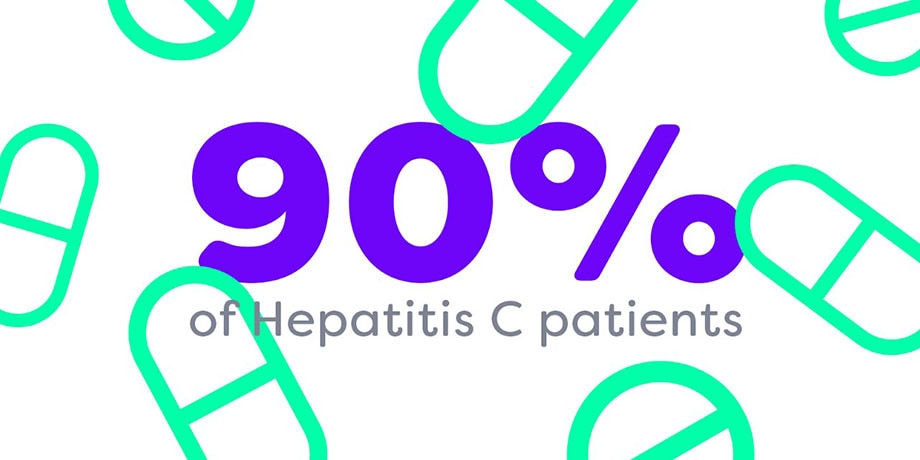
Number of Hepatitis C patients who can now be cured by taking an oral pill for 8 to 12 weeks
2. The Hepatitis Cure
Hepatitis C, a viral infection that can cause liver cancer and failure, affects around 130 million to 150 million people globally each year. Of that, around 700,000 people die each year from the disease, often due to limited access to diagnosis and treatment. Traditional treatment with an anti-viral drug regimen, such as interferon injections, often results in a number of debilitating side effects, including severe reductions in certain blood cells and depression.
However, in 2013, US biopharmaceutical company Gilead made a medical breakthrough with the development of the first oral cure for the disease. Now, more than 90 percent of patients can be cured simply by taking an oral pill for eight to 12 weeks.
3. Real-Life Bionic People
Now, who would have thought that the Bionic Man might become a reality? Robots are now being used to replace lost limbs and other body parts. Bionic eyes like the Argus II Retinal Prosthesis System have been developed to help those who suffer from macular degeneration and have lost their vision as a result.
Scientists are also working on technology to use robots to create a human heart or other organs. They have already used the same technology to create an artificial jellyfish, and they are accelerating their research to include human organs.
4. Calling Dr Watson
But what if you have a rare, undiagnosed disease that’s stumping doctor after doctor? Now imagine there was a single, secure database that could read your symptoms, then run through thousands of clinical studies, similar patient records and medical textbooks to present a risk-matched list of potential diseases — or spot important information your physician may have missed.
This is no longer just a dream. Just one year after its launch, IBM Watson Health offers just this, providing more targeted and personalised treatment. It’s able to do so by combining cognitive computing with genome sequencing, to enable a clearer understanding of a person’s genetic profile.
Among its list of tasks: studying and diagnosing melanoma, a notoriously difficult form of skin cancer to spot because of the way it manifests differently in each individual. Doctors are hoping that the software will be able to recognise important but sometimes missed features of the disease, allowing the medical community to better understand, diagnose and treat it.
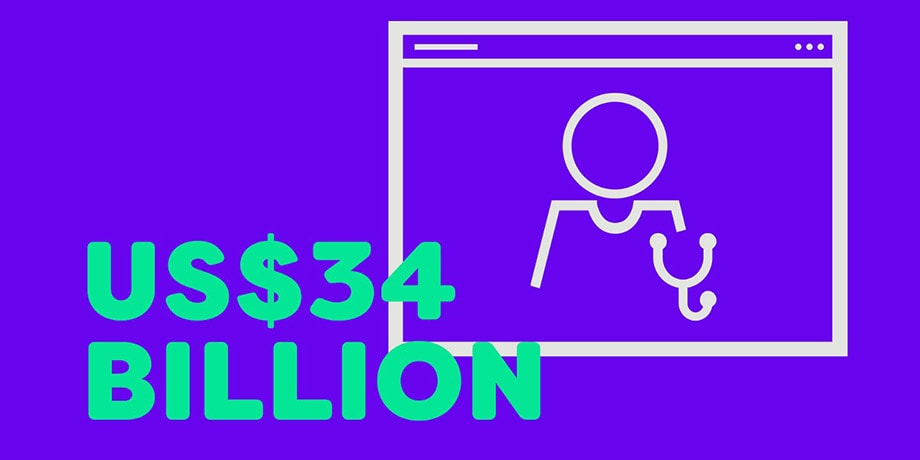
The predicted value of the global telemedicine market by 2020
5. The Doctor Will See You, Wherever You Are
In June 2011, seven-month-old MaLea Fox from Oregon, USA, was diagnosed with a life-threatening bacterial infection. What drove her treatment into the futuristic realm was that it was done via a two-way communication system. MaLea was sitting in front of a robot-like device at Columbia Memorial Hospital in Astoria, Oregon, USA, while the paediatric specialist who diagnosed her was in front of a telemedicine workstation in the Oregon Health & Science University’s Doernbecher Children’s Hospital in Portland, almost 150 kilometres away. This quick tech-enabled diagnosis is said to have saved her life.
Remote patient monitoring systems have been around for a while and their usage is expected increase in popularity. Indeed, the global telemedicine market is predicted to hit US$34 billion by 2020, with North America being the biggest market.
Such participatory healthcare — through the better use of data and technology — is set to radically transform the quality as well as cost of healthcare services. One example is eCare21, a remote patient-monitoring system that collects data from 1,000 senior citizens in the US.
The system uses smartphones, wearable technology such as Fitbit, Bluetooth and other sensors to collect information such as blood pressure, physical activity, glucose levels, medication intake and weight. This information is then compiled on a dashboard so the patient’s doctors, loved ones and caregivers can keep an eye on them and provide proactive care, even if they are thousands of miles away.
6. ‘Second Skin’ Takes On a New Meaning
New research is also opening up more possibilities in artificial skin graft technology. At the Massachusetts Institute of Technology, scientist Robert Langer has developed XPL (cross-linked polymer layer), a very thin material that mimics the appearance of taut, youthful skin.
While the effect is only temporary at the moment, this new material could be used to deliver medication more effectively. The medicine could go into the polymer coating and make contact with a patient’s skin without being washed off. It can also fulfill more cosmetic roles, like helping to reduce wrinkles and eye bags.
University of California Riverside chemistry professor Chao Wang has taken this even further, by developing polymers that can regrow themselves and be used as artificial skin. His next aim? To combine this with self-healing properties. Scientists are also hoping to use this technology to develop electronic skin that could imbue prosthetics with the sense of touch, bringing this important sense back to those who have lost it.
The Future Starts Now
It’s suffice to say that mankind has never before seen the kind of exponential progress in information technology, imaging and biology — until now. While we can’t teleport the sick (yet), a future where every patient’s care and well-being are manifested through technological innovation doesn’t seem too far away. Even for non-Trekkies, that’s something definitely worth looking forward to.
Juno Therapeutics and Gilead are Temasek portfolio companies.

